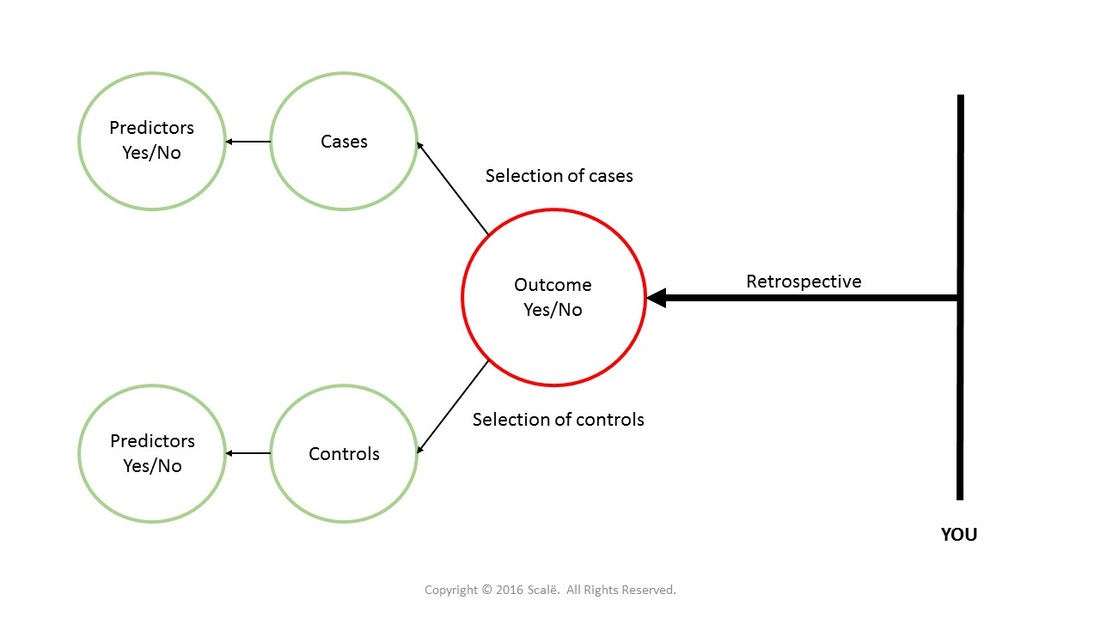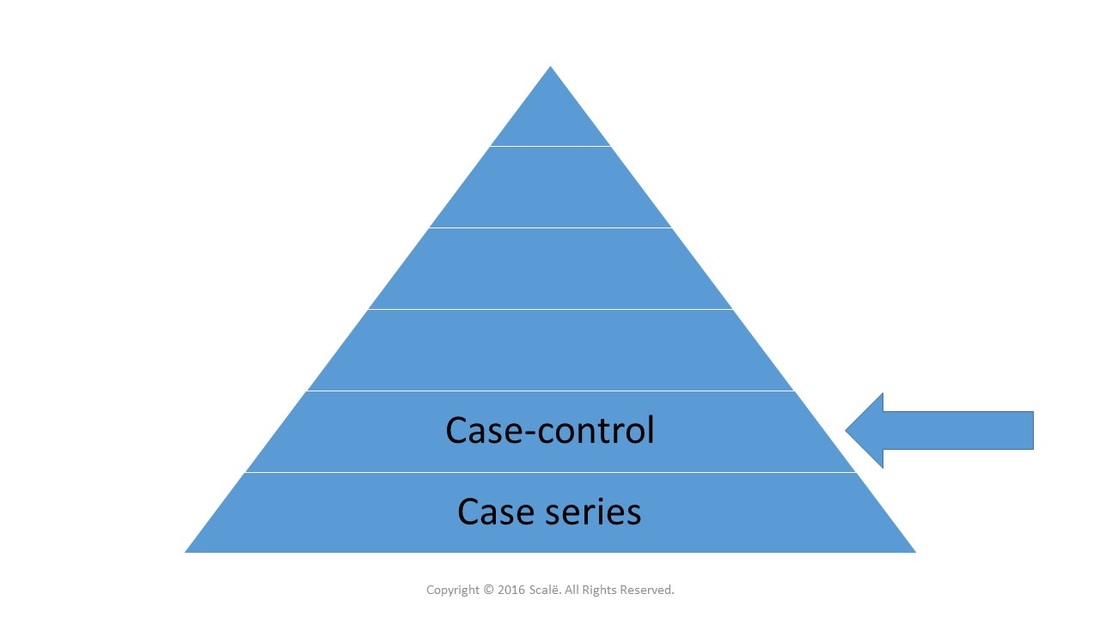Case-control
Case-control designs are used to investigate rare outcomes and generate hypotheses
The case-control design is useful when studying rare diseases and hypothesized associations. The choice of case-control as a research design should be avoided if a retrospective cohort study is feasible to answer a research question. Case-control designs are highly biased due to non-random selection of cases and controls.
To conduct a case-control study, researchers choose a sample of people that have an outcome (cases) and then they choose a comparable sample of people that do not have the outcome (controls). The cases and controls are then compared on various risk factors associated with the outcome.
Case-control designs cannot generate measures of prevalence, nor can they infer causal effects, because of the lack of randomization. The researcher chooses how many people will be included in the study (leading to selection biases), so the prevalence in the entire population cannot be generated. There are also observation biases associated with using prior existing data that may or may not contain valid information.
To conduct a case-control study, researchers choose a sample of people that have an outcome (cases) and then they choose a comparable sample of people that do not have the outcome (controls). The cases and controls are then compared on various risk factors associated with the outcome.
Case-control designs cannot generate measures of prevalence, nor can they infer causal effects, because of the lack of randomization. The researcher chooses how many people will be included in the study (leading to selection biases), so the prevalence in the entire population cannot be generated. There are also observation biases associated with using prior existing data that may or may not contain valid information.
Choosing appropriate cases and controls is of paramount importance when conducting case-control designs. Researchers must select cases that they hypothesize are truly representative of the etiology and risk associated with the outcome. As it pertains to controls, researchers should select controls that are demographically and clinically similar to the cases and have developed the outcome or disease state. Researchers can select controls from the immediate clinical environment (convenience sampling) or from the general population if they have access to a suitable pool of participants.
Matching cases to controls adds extra complexity to case-control designs. It would be a tedious process to individually match each case to a comparable control. If at all possible, propensity score matching should be used to match cases to controls in the selection process. However, most times, researchers will compare the two groups on various demographic and prognostic factors to make sure that cases and controls are comparable at the group level.
Case-control studies can generate unadjusted odds ratios with 95% confidence intervals which provide a measure of strength of association between predictor and outcome variables. Between-subjects comparisons are often used with case-control designs.
Matching cases to controls adds extra complexity to case-control designs. It would be a tedious process to individually match each case to a comparable control. If at all possible, propensity score matching should be used to match cases to controls in the selection process. However, most times, researchers will compare the two groups on various demographic and prognostic factors to make sure that cases and controls are comparable at the group level.
Case-control studies can generate unadjusted odds ratios with 95% confidence intervals which provide a measure of strength of association between predictor and outcome variables. Between-subjects comparisons are often used with case-control designs.
It is common to collect more control observations than case observations to increase statistical power in case-control designs. Control to case ratios can be 2:1, 3:1, or 4:1. Any higher ratio of controls to cases will not yield significantly more power.
Click on the Statistical Power button to continue.
Statistician For Hire
DO YOU NEED TO HIRE A STATISTICIAN?
Eric Heidel, Ph.D. will provide statistical consulting for your research study at $100/hour. Secure checkout is available with PayPal, Stripe, Venmo, and Zelle.
- Statistical Analysis
- Sample Size Calculations
- Diagnostic Testing and Epidemiological Calculations
- Psychometrics


